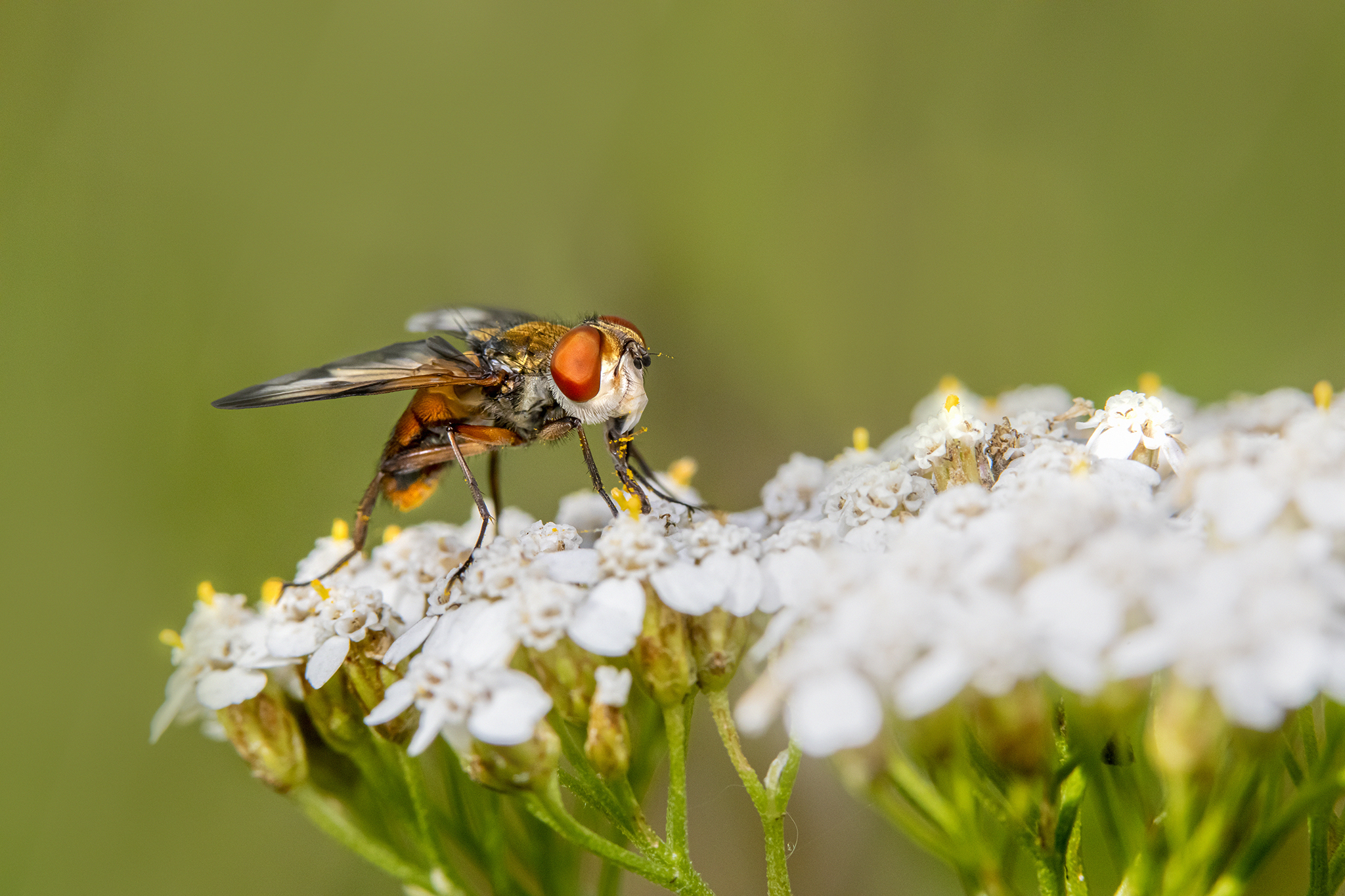Phasia hemiptera is a species of fly in the family Tachinidae, which is known for its role as a parasitoid of various insects. Here’s a quick overview of this species:
Description
- Appearance: Phasia hemiptera is a relatively small fly, generally around 5 to 8 millimeters in length. It is recognized by its distinctive broad, flattened abdomen and large, iridescent compound eyes.
- Coloration: The fly’s body is primarily black with yellowish or brownish hues. Its wings are clear with a unique dark, patchy pattern, often appearing smoky or with dark edges. The wings rest flat over the body when the fly is at rest.
Distribution and Habitat
- Geographical Range: This species is widely distributed across Europe, from the British Isles to parts of Central and Eastern Europe, and can also be found in some parts of Asia.
- Preferred Habitats: Phasia hemiptera typically inhabits meadows, grasslands, woodlands, gardens, and hedgerows, where its host insects are abundant.
Behavior and Ecology
- Diet: As an adult, Phasia hemiptera feeds on nectar and pollen, making it a pollinator. However, the larvae of this species are parasitoids.
- Parasitoid Nature: The larvae are internal parasitoids, specifically targeting Hemipteran insects (true bugs), such as shield bugs and other similar insects. Female flies lay their eggs on or near these hosts. Once the eggs hatch, the larvae burrow into the host and feed on its internal tissues, eventually leading to the host’s death.
Life Cycle
- Reproduction: Females typically lay their eggs on the host insect, ensuring that the emerging larvae have immediate access to their food source.
- Development: The larvae develop within the host, consuming it from the inside. Once they are mature, they leave the host to pupate in the soil. Adult flies emerge from these pupae to continue the cycle.
Importance in Ecosystem
- Pest Control: As a parasitoid, Phasia hemiptera plays an essential role in controlling the populations of its host insects, which may otherwise become pests to crops and plants.
- Pollination: The adult flies contribute to pollination as they feed on nectar and pollen.
Conservation Status
- IUCN Status: Phasia hemiptera is not currently listed as endangered, and it is considered to have a stable population in most of its range.
Phasia hemiptera is a fascinating example of the diverse and often complex ecological roles played by flies, particularly in their function both as pollinators and as natural pest control agents through their parasitoid life cycle.
Visited 285 times, 5 visit(s) today
Views: 537
Subscribe to the newsletter:
